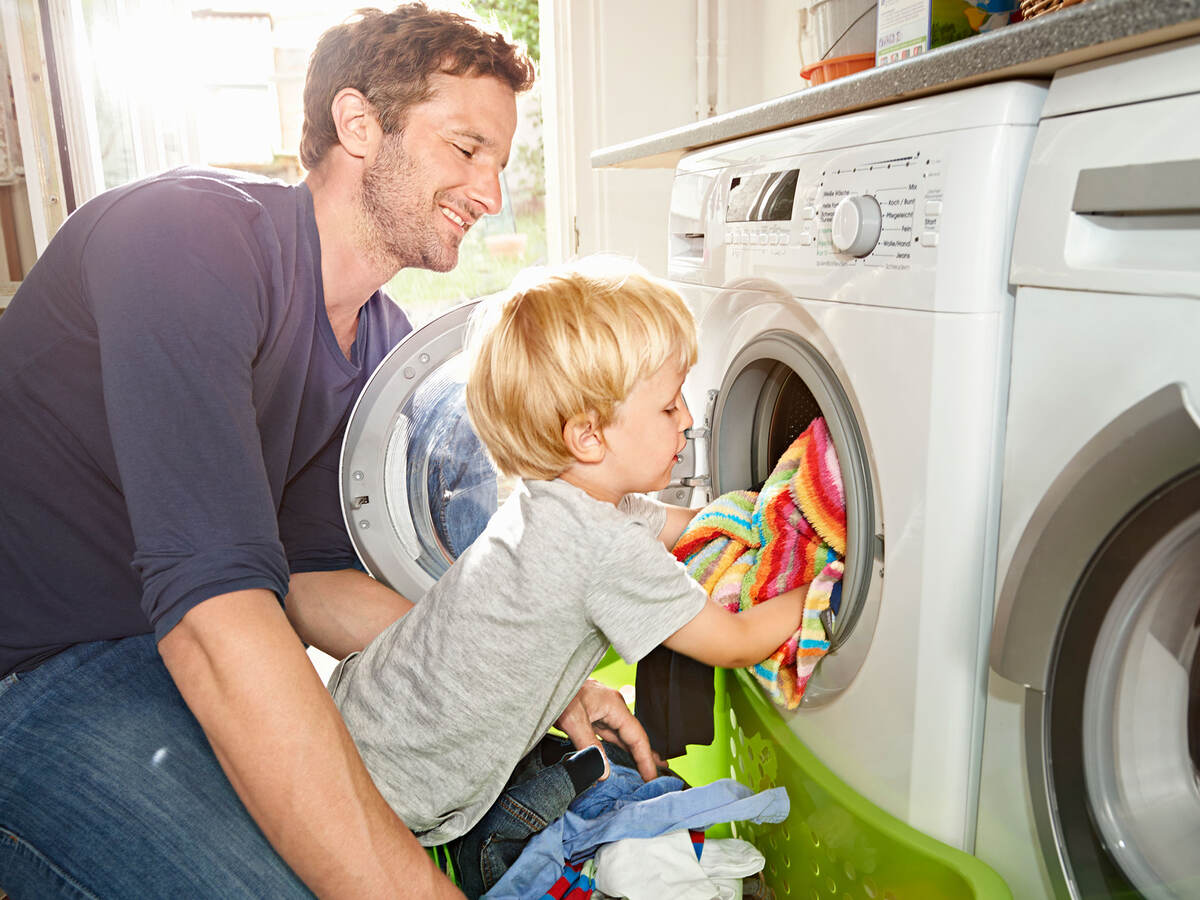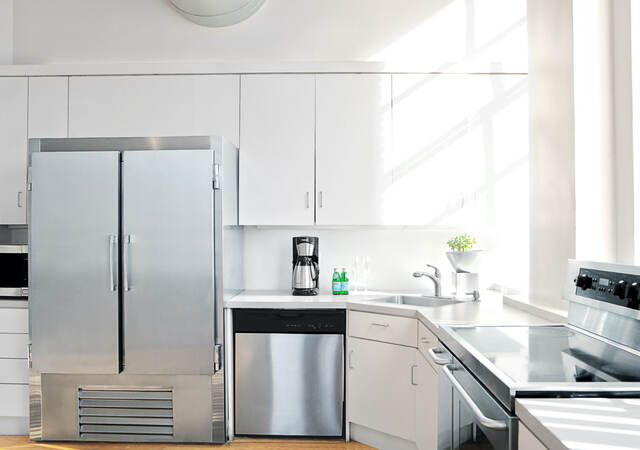November 29, 2023
By John K. Taecker, PE senior regulatory engineer - Distinguished member of Technical Staff, William Henry Merrill Society and John Maguire, lead regulatory engineer
There are many statistics published each year regarding clothes dryer fires, by such organizations as the Consumer Product Safety Commission (CPSC), the National Fire Protection Association (NFPA) and the United States Fire Administration (USFA). There are approximately 15,600 structure fires, 400 injuries and 15 deaths reported annually as a result of dryer fires.
According to USFA, every year, clothes dryer fires account for over $100 million (USD) in property losses. A majority of dryer fires occur as a result of highly combustible lint getting caught in the dryer’s vent and becoming heated to the point of ignition. The lint is combustible due to synthetics used in clothes.
The challenge
For dryers, the combination of high heat, a small chamber and combustible materials can be lethal, as shown by National Fire Protection Association statistics (NFPA). “Failure to clean” was cited in 33% of dryer fires, while spontaneous combustion of the clothing load during dryer use contributed to 26% of the blazes.
When not properly cleaned and maintained, by removing the lint from the filter after each use and having the exhaust vent inspected annually and cleaned, the risk of fire is increased. Dryer fires can readily spread through the exhaust system and potentially ignite other combustible and flammable materials in the area surrounding the dryer, such as household cleaning materials and adjacent structures (e.g., walls).
Thus, the proper installation, use and maintenance of third-party certified clothes dryers and clothes dryer exhaust duct systems in any occupancy using clothes dryers is critical to reducing the fire hazard. The applicable safety standards used to evaluate and certify clothes dryers include fire containment tests and a cool-down-period requirement to mitigate the risk of fire due to lint accumulation and reduce the risk of spontaneous ignition of the clothes load.
Product testing and certifications
The UL Solutions’ product category “Clothes Dryers” (KMEX) covers electric clothes dryers intended for use only where water has been used as the cleaning agent. UL Certified products can be found using our complimentary search tool, UL Product iQ®. Access to the code authority features of Product iQ requires a simple one-time registration.
The basic standard used to investigate products in this category that are intended for use by the general public within household and commercial installations, including appliances provided with coin-, ticket- or card-operated mechanisms, is UL 2158, The Standard for Electric Clothes Dryers.
The UL Solutions’ product category “Gas-fired Clothes Dryers, Type 1” (LETA) covers gas-fired Type 1 clothes dryers, which are appliances used to dry wet laundry by means of heat derived from the combustion of fuel gases. Type 1 clothes dryers may be for use with natural gas, manufactured gas, mixed gas, propane gas, liquefied petroleum gases, or LP gas-air mixture as marked on the dryer rating plate. The basic standard used to investigate products in this category is ANSI Z21.5.1/CSA 7.1, "Gas Clothes Dryers, Volume I – Type 1 Clothes Dryers."
Combination washer-dryers and laundry centers using electric dryers are covered under Washing Machines (ZCTT), and combination washer-dryers and laundry centers using gas dryers are covered under Gas-Fired Clothes Dryers, Type 1 (LETA. The basic standard used to investigate these products that are intended for use by the general public within household and commercial installations is UL 2157, the Standard for Electric Clothes Washing Machines and Extractors and either UL 2158 or ANSI Z21.5.1/CSA 7.1, "Gas Clothes Dryers, Volume I – Type 1 Clothes Dryers."
Exhaust systems
The normal use of a clothes dryer creates a large volume of humid air, which needs to be exhausted to the outside in accordance with the manufacturer's instructions. Without proper exhaust, this moisture could affect electrical wiring or other electrical devices in the vicinity.
As part of the exhaust system, third-party certified clothes dryer transition ducts are used to connect either an electric or gas clothes dryer to an existing permanent duct system provided as part of the building structure. These ducts are covered under Clothes Dryer Transition Ducts (KMIK), and evaluated in accordance with UL 2158A, the Standard for Clothes Dryer Transition Ducts. These ducts are either rigid or flexible metal types. Flexible types are a maximum 8 ft. long for use in single lengths only. Using the type of duct recommended by the clothes dryer manufacturer is important to reduce the risk of fire.
Dryer-exhaust-duct power ventilators (DEDPV) are used to assist the exhaust from clothes dryers over longer length ducts. The UL Solutions’ product category for DEDPV is ZACZ, and the basic standard used to investigate these products is UL 705, the Standard for Power Ventilators.
These ventilators are for serving a single residential dryer, and are intended to be installed in accordance with the ventilator manufacturer's instructions, as well as the installation instructions for the clothes dryer with which it is combined. These ventilators are provided with at least one of the following:
- Means to sense the operation of the clothes dryer and automatically cause the DEDPV to turn on.
- An interlocking device intended to prevent the clothes dryer from being energized if the DEDPV fails to turn on.
DEDPVs are tested and certified to evaluate their ability to maintain acceptable duct air velocity throughout the range between the maximum and minimum duct length specified in the ventilator instruction manual.
Code requirements for installation and maintenance
The International Fuel Gas Code (IFGC), International Mechanical Code (IMC), Uniform Mechanical Code (UMC), and International Residential Code (IRC) require commercial and residential clothes dryers to be listed and labeled, and to be installed in accordance with the manufacturer’s installation instructions. The required product testing standards include requirements for specific cleaning and maintenance directions to be part of the manufacturer’s installation and use instructions.
Clothes dryers, other than condenser-type or heat pump-type clothes dryers, are intended to be connected to a clothes dryer exhaust duct to the outdoors. The maximum duct length and number of bends is intended to be in accordance with the clothes dryer installation instructions. The installation codes have additional requirements for the construction of the clothes dryer exhaust system.
The International Fire Code (IFC) and the NFPA Fire Code (NFPA 1) require the lint trap, mechanical and heating components, and the exhaust duct system of a clothes dryer to be maintained in accordance with the manufacturer’s operating instructions to prevent the accumulation of lint or debris that prevents the exhaust of air and products of combustion.
The frequency of inspections depends on various factors, such as how often the dryer is used, the geometry of the exhaust duct system, and the age and type of dryer.
Improper consumer use and care of a dryer are some of the industry’s biggest challenges in maintaining appliance performance and safety.
Preventative actions to take
For safety tips for clothes dryers, please see the NFPA safety sheet.
Additional actions to take for general home fire safety:
- Homes should be protected with interconnected smoke alarms installed in every sleeping room, outside of sleeping rooms and at least one on every level of a home. Learn more here.
- To best prepare for what actions to take should you experience a fire in your home, it’s recommended to have a family escape plan and to practice the plan with family members.
- All family members should know the address of the home and how to call for emergency help (911 or your local emergency phone number).
Stay informed
Actionable insights on the topics you choose, delivered directly to your inbox.


